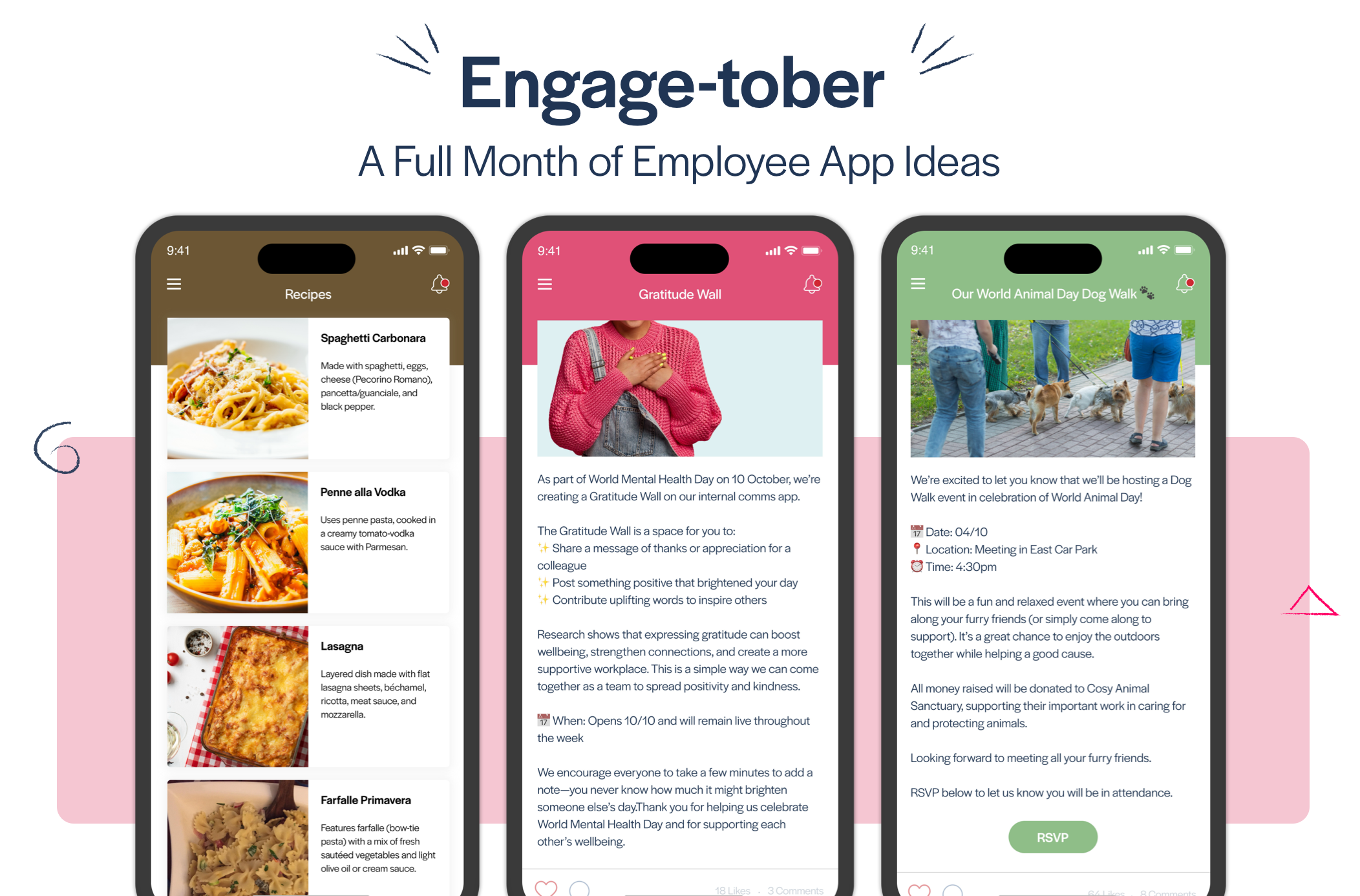
Blog
Reasons Why Employee Recognition Leads to Employee Engagement.
Employee engagement as a concept has become increasingly acknowledged in management thinking over the past ten years.

Employee engagement as a concept has become increasingly acknowledged in management thinking over the past ten years. We like the definition of employee engagement devised by the UK’s Chartered Institute of Personnel & Development (CIPD) and Kingston Business School, which says that employee engagement is “being positively present during the performance of work by willingly contributing intellectual effort, experiencing positive emotions and meaningful connections to other”.
They identify three dimensions of employee engagement:
- Intellectual engagement – thinking hard about the job and how to do it better;
- Effective engagement – feeling positively about doing a good job;
- Social engagement – actively taking opportunities to discuss work-related improvements with others at work.
Though all three are intertwined, we’re particularly fond of the effective engagement part, as we know that strong vibes about getting a good job done makes us a lot more positive and happy about life and getting up in the morning to go to work, and satisfied of our place among our colleagues.
The American Psychological Association conducted an online survey among 1,714 adults to find that employees who feel valued are more likely to report better physical and mental health, as well as higher levels of engagement, satisfaction and motivation, compared to those who do not feel valued by their employers. 93% of all employees who reported feeling valued also said that they were motivated to do their best at work and 88% said they felt engaged. Compare this with only 33% and 38%, respectively, of those who said they did not feel valued.
In the USA and Canada, they declared the first Friday in March as the Employee Appreciation Day; it’s a start, but surely one day per year is not enough: a survey from Globoforce in 2016 has revealed that consistent employee recognition from company leaders engages employees and produces a sense of well-being, trust, humanity and confidence that can propel employee culture forward.
Ahead of the game in Employee Recognition and Engagement, IBM understands how one leads to the other and is crucial for business success. They say that regular employee recognition makes staff believe leaders care about them and that the presence of a recognition programme has the potential to make big differences in employee morale. They have even created an online Recognition Centre, where every employee can recognize other IBMers for their contributions and view their own recognition activity, that’s peer-to-peer power in action!
They also say categorically that employee appreciation is linked to higher engagement; when recognized, 86% of employees feel happier at work and 85% feel more job satisfaction; 91% recognized in the past month consider their employer the best place to work, a level of satisfaction that’s key to employee engagement.
IBM has found out that the more recent an employee’s recognition and appreciation, the more positive that worker feels about workplace changes, whereas those never recognized are fearful of change. One other crucial spin-off of regular and recent employee recognition is that it garners trust in leadership; indeed 89% of people who trust their senior leaders categorized their company as a best place to work.
When you acknowledge your employees effectively, you reinforce their actions and attitude, and they tend to give their best more often. Our mobile app building tool already enables employee recognition through simple selfie photo galleries where employees can snap a photo and submit a story to recommend a colleague. The employer then reviews these and publishes a flow of them in their app built on our platform. That can be your first move to put in place genuine peer generated employee recognition.
Download the free eGuide on Your Journey to a Successful Employee Communications App below.
Sources:
- IBM Blogs
- CIPD: The Professional Body for Human Resources and People Development
- IBM Recognition Center
- APA Survey Finds Feeling Valued at Work Linked to Well-Being and Performance
You may also be interested in:










